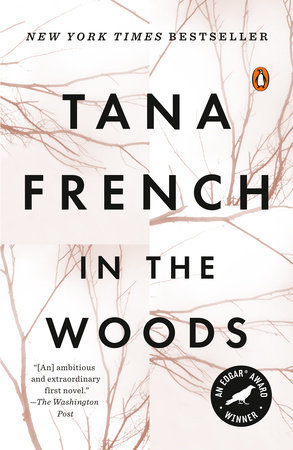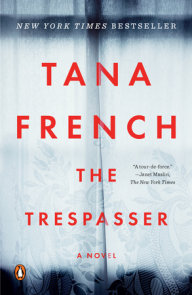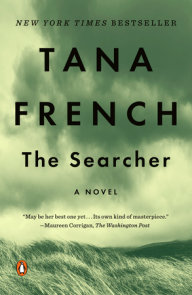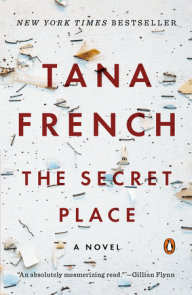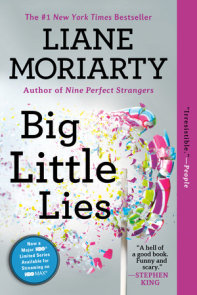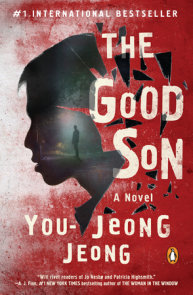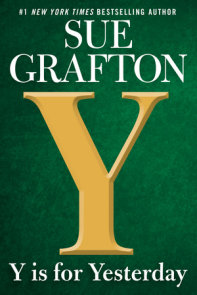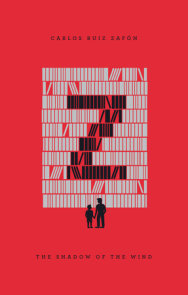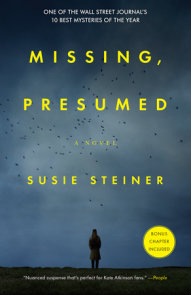READERS GUIDE
Questions and Topics for Discussion
INTRODUCTION
Much more than a gripping police procedural, Tana French’s debut novel offers readers a stunning look into the dark recesses of the human heart and a brooding reflection on the evils that are sometimes just a breath away. As a newly anointed murder-squad detective in Dublin, Ireland, Rob Ryan solves mysteries for a living. Yet only a handful of people know that a generation earlier Ryan himself stood at the center of one of the most tantalizing unsolved cases in the recent annals of Irish crime. At the age of twelve, then known as Adam Ryan, he and two playmates wandered into a wood near his home in the town of Knocknaree. Hours after being reported missing, Adam was found unhurt but standing in a pair of blood-soaked sneakers, so deeply traumatized that he could not recall a single detail of what had happened. The two other children were never found.
Ryan has spent twenty years trying to bury his past, but if his line of work has shown him anything it is that some secrets refuse to remain hidden. His long-stifled anxieties abruptly surface when the battered body of twelve-year-old Katy Devlin is discovered in the same woods where Ryan had lost his friends and his innocence. When Ryan’s partner Cassie Maddox volunteers herself and Ryan to take the case, Ryan embarks on a treacherous odyssey through repressed memories and contemporary horror. At the same time that he and Cassie become the best hope for bringing Katy’s murderer to justice, Ryan nurses his personal hope that he may, at last, find the keys to unlock his own decades-old mystery. While investigating Katy’s strangely inward-looking family and the political intrigues surrounding a local highway project, Rob and Cassie develop some promising leads in the Devlin murder. However, as the investigation also brings Rob closer to resurrecting his own most disturbing moments, he finds his hopes of killing two birds with one stone dissolving into confusion. Trying to recover what was stolen from him so long ago, Rob begins to risk losing everything of value that he still has—his professional reputation, his closest friendships, and his mental well-being.
A first-time author who writes like a seasoned veteran, Tana French populates her psychological thriller with deftly drawn, unforgettable characters, from Rob’s brilliant and magnetic partner, Cassie, to Katy’s overprotective and evasive parents to Mark Hanly, the passionate young archaeologist whose very life is devoted to buried truths. Always at the center of the story, however, is Rob Ryan himself—keenly intelligent, outwardly brash and confident, but far more fundamentally wounded and incomplete than appearances reveal. In the dark, deceptive world of In the Woods, many of the hardest questions depend upon a single query: will Rob’s attempts to regain his inner equilibrium finally throw his life, his friends, and the Devlin investigation out of balance forever?
ABOUT TANA FRENCH
Born in Vermont, Tana French had a peripatetic childhood that took her to Florence and Rome, as well as the African nation of Malawi. A resident of Dublin since 1990, she has a degree in drama and English from Trinity College. Prior to writing In the Woods, she was best known as an actor in a wide variety of theatrical productions in Dublin.
A CONVERSATION WITH TANA FRENCH
Q. You had an unusually globetrotting childhood, with stops in Italy and Malawi. We’re guessing that as a schoolgirl in Malawi, like Adam Ryan in Knocknaree, you may have had some experiences with wild, forbidden places. Does Adam’s evening of terror In the Woods correlate to anything you encountered or were warned to avoid in the African subtropics?
I think every child’s world has wild places where dark things might be waiting, places where the borderline of normal reality seems to fracture. For me, living in Malawi probably gave those places and those dark things a more tangible, more vivid form than they might have had if I’d been growing up in Vermont or in Dublin. Right outside our backyard was the bush, a whole savage and mysterious and potentially lethal world just a thin wire fence away. I could hear hyenas whooping out there at night, cobras slid into our backyard, when the local medicine men held their ceremonies I heard the drumming and chanting. (And yes, I was warned to avoid all this stuff, but I was the kind of kid who always got a few steps closer than my parents ever knew). But I think that sense of wild danger just a few steps away is a presence for every child; the locus of that danger might be the space under the bed, the basement, or the spooky shortcut that no one wants to take, but it’s always there.
Q. In addition to becoming an author, you have acquired a strong reputation as an actor. Why do you think In the Woodscame out of you in the shape of a novel, instead of a script or a screenplay?
This may sound strange, but writing In the Woods as a novel was actually a lot closer to acting than writing a script or a screenplay would have been. The book is first person—everything is seen through Rob Ryan’s eyes, filtered through his perceptions and described in his voice. That was my job as an actor for years: to create a character and spend hours a day operating completely from her perspective. Writing In the Woods was just an extension of that process. I played Rob Ryan for almost two years—on paper, rather than on stage, but the mental process was the same. To write the story as a script or a screenplay, I would have needed to work from a much more detached point of view, coming at it as an all-seeing outsider rather than as a character experiencing the story from inside, and I don’t have a clue how to do that. Working from inside is all I know.
Q.You write about archaeology as if you’ve been there. Should we assume that the archaeological dig in your novel is more than just a storytelling convenience?
I’ve always been fascinated by archaeology (when I was little I was going to be an archaeologist and discover Troy, till I found out that someone had already done that), and I’ve actually worked on two archaeological digs. The second one was where I got the idea for In the Woods. There was a wood not far from the dig, and one day I thought, What if three kids went in there to play and only one came out, and he had no memory of what had happened? So the idea of a dig as the setting worked its way into the book almost without me realizing it. I left it there because it seemed to fit on several levels. For one thing, that tense, discordant relationship between past and present is very much a part of the book. Also, the archaeologist’s job is a lot like the detective’s: they’re both presented with the end result of a series of events, and they have to work their way backwards from there to figure out what happened.
Q. To tell the story of In the Woods, you have transgendered your voice; you speak to us through the male persona of Rob Ryan. Why did you opt for a male narrator, and did you encounter any particular challenges in adopting a masculine perspective?
Almost as soon as I thought of the basic premise of the book, the character of Rob Ryan came into my head: intelligent, sarcastic, secretive, proud, too badly damaged to be honest either with himself or with his readers—and male. It was never a conscious choice; that’s just how he popped up.
I didn’t run into any particular difficulties to do with writing from a male perspective. I’ve always had a lot of good male friends, which may have helped. What was much more difficult was writing from the perspective of someone as deeply messed up as Rob Ryan. His friends’ disappearance and his loss of memory have sent cracks straight across his mind: he’s unable to trust anything either around him or within him. At the point when the book begins, he’s more or less functional ñ good at his job, sustaining at least one close friendship, basically happy—but as the case draws him back towards his past, those cracks widen and his mind starts to disintegrate. Trying to see the events of the book from that increasingly skewed perspective was an immense challenge.
Q. American readers who have a quaint vision of Ireland as a place of Old World traditions may be surprised to find that many of the cultural references in your novel come from distinctly American sources like The Simpsons and Sex and the City. Any comments on the prominence of these Americanisms, either in your writing or in Irish life itself?
There’s always been a huge amount of cultural interplay between the United States and Ireland. For a long time now, it’s been very difficult to write truthfully about Ireland without including some American cultural references—for people my parents’ age, for example, watching cowboy films or dancing to Elvis were often defining experiences. The Irish historically have had an enormous appetite for every form of culture, and such a small country can’t produce enough to meet that demand, so people here soak up American TV shows, films, books, and music. Transposed into an Irish context, those become part of our culture, too—they become part of that interplay. Take The Commitments: Roddy Doyle transposed very American music to a Dublin context to create an intensely Irish book, which then went back to America both in book form and in movie form.
I think it’s probably impossible to have satellite TV and the Internet and still be quaint and Old World; that demands a level of cultural isolation that just doesn’t exist here. When I referenced The Simpsons, for example, I wasn’t even thinking of it as an American reference, because it’s omnipresent here as well: everyone’s watched it, everyone knows it, its catchphrases have become part of the language. The reality of Irish culture today is that it’s not wholly indigenous; it’s a fusion of homegrown elements and imported stuff, and it’s all the richer for that.
Q. In the Woods takes a great deal of care to depict police procedures in an accurate, authentic fashion. In researching the novel, did you learn anything about detective work or criminal justice that especially surprised you or produced any singular revelations?
I was lucky enough to have the help of an amazing detective on the Irish police force who spent hours talking with me, answered an incredible variety of weird questions, and is responsible for basically everything in the book that’s police-related and accurate. I did take some liberties, where the story required it—to take the most obvious example, there’s no Murder squad in Ireland—but, apart from those, I tried to be as accurate as possible.
The thing that startled me most is how often detectives know exactly whodunit and can’t do a thing about it. In detective novels (including mine) and TV series, almost all of the focus is on finding out who committed the murder. That’s at the heart of the plot arc; that occupies about 99 percent of the detectives’ time and energy, that’s the moment of revelation that will transform everything. But one of the things I learned while I was researching is that, in reality, identifying the murderer is often the easy part. Once you’ve done that, you still have to get evidence that will stand up in court—and that can be a long, tangled, excruciating, and sometimes hopeless struggle. Often detectives are absolutely sure who committed a murder very early in the investigation, but they put months or years of work into trying to get the suspect to confess, trying to break his alibi, trying to find a piece of forensic evidence to link him to the crime—and sometimes nothing works, and they’re left to watch him get away with it.
Q. A striking aspect of In the Woods is its bold resistance to many of the conventional expectations of the mystery genre. It’s safe to say that some readers reach for mysteries because they crave the assurance of seeing detectives acting with cold-blooded confidence, problems being solved, and justice being done. In the Woods is not completely obliging on any of these counts. Did you set out to write such an iconoclastic book?
I’ve always been fascinated by the shape of the mystery novel. It’s so clearly, cleanly defined: someone gets killed, and someone else finds out who did it. On the most basic level, In the Woods is faithful to that convention: there’s a murder at the beginning, and over the course of the book Rob and Cassie find the killer. But my favorite mystery books have always been the ones that experiment with the boundaries of the genre: Donna Tartt’s The Secret History (which is both my favorite literary novel and my favorite crime novel), where you find out on the first page who killed whom; Josephine Tey’s The Franchise Affair, a deeply unsettling study of a psychopath, where the villain is obvious almost from the start and the most serious crime is basically wasting police time; Dennis Lehane’s Mystic River, where the guilty go free and the innocent pay for others’ crimes. These books are set on the ragged edge where genre conventions meet reality—a reality in which people are flawed and contradictory, justice isn’t always done, truth is a complicated thing, and the search for answers doesn’t always have a happy ending. They’re not as comforting as the tidier, more unequivocal books in which good triumphs and evil is punished, but they’re the ones that capture me, the ones that stay in my mind. When I was writing In the Woods, I wasn’t trying to be iconoclastic; I’m nowhere near that organized. I was just trying to write the kind of book I like to read.
Q. Having lost the companionship of his two vanished friends Jamie and Peter, Rob Ryan grows up to form another triumvirate with Cassie and Sam. Do you see Rob as sometimes striving more to repeat the past than to salvage and redeem it?
I think we all have unfinished patterns in our lives, patterns that we can’t move beyond until we find a way to complete them. The pattern that was branded onto Rob’s mind when he was twelve—the two loved and lost friends—is one of these: he comes back to it almost involuntarily. Once he’s there, he can’t or won’t do anything to change the pattern—he’s only dimly aware that changing it is even an option—and so he almost deliberately wrecks the triumvirate with Cassie and Sam, because that’s the only thing he knows how to do with it. For him, the past and the present coexist: his past defines his present completely.
Q. What are some of your other thoughts about the psychological makeup of Rob Ryan? And what sources did you draw upon—psychiatric research, your experience as an actor, etc.—to bring his character into focus?
My wonderful editor, Kendra Harpster, once told me that Rob is the kind of guy whom you know you shouldn’t get involved with; you know he’s trouble; you know he’s too badly damaged for a healthy relationship—but you want to get involved anyway. I think we’ve all known guys like that.
No psychiatric research—at least not for Rob, although I did a lot of research on psychopathology in order to make the killer as real as possible. Rob is messed up in a fairly individual way; I’m not sure it has an official diagnosis! For Rob, my main resource was probably my experience as an actor. For a long time now, it’s been my job to create a three-dimensional character out of words on a page, and (touch wood) send the audience home feeling as if that character is a real person whom they actually know. A lot of people have told me that they feel that way about the characters in In the Woods, and it’s the best compliment anyone can give me. When someone says that, I know I’ve done my job.
Q. In the Woods sounds a series of elegiac notes. Not only is Rob Ryan obviously shaken by the theft of his childhood, but the book as a whole mourns the passing of lost time, whether it be the more carefree Ireland of the 1980s or the remoter medieval era that the book’s archaeologists are trying desperately to document. Is there any golden past for which you catch yourself yearning?
I catch myself missing the Dublin I moved to in 1990. Because almost nobody had money, back then, culture and conversation were our main currencies. We valued playwrights, poets, musicians, artists—even if they weren’t contributing to the economy, they were contributing something priceless to the fabric of society. We valued fast wit, elegant language, creative swear words, in-depth arguments, long evenings in the pub laughing ourselves silly—even if they didn’t generate revenue, they generated a sense of community that no amount of revenue can create.
Since then, Ireland’s had an economic boom that has elevated money to the status of a god: the worth of any person, place, or industry is determined exclusively by how much money it generates. As a result, we seem to have basically nothing but money. People can afford SUVs but not homes; everyone’s working so frenetically, and commuting so far, that no one has time for a family life, never mind a conversation and a laugh; as house prices skyrocket, people can’t afford to live in the neighborhoods where they grew up, so communities are fragmenting; artists, unless they’re massively successful, are treated like worthless spongers; theaters are being closed and heritage sites destroyed because they don’t make enough money to count. We have all the luxuries, but we don’t have the comforts and we don’t have the essentials, and I miss them. Nostalgia is a dangerous thing, though, so I keep an eye on that tendency. The Dublin I’m missing is one in which people were desperately poor, and unemployment and emigration were sky-high. It had its wonderful sides, but it was far from golden.
Q. In connection with her own near-molestation as a child, your detective Cassie Maddox observes that children find it almost impossible to resist the promise of marvels—the possibility of entering a magical world. Do you really think adults are all that different? Aren’t most of us continually both ennobled and victimized by our willingness to believe and search for the fantastic?
I think that leap of belief, that capacity to respond to the mysterious unseen and unknown, is one of the most incredible human abilities—and how you respond to the unknown is one of the defining choices that make you what you are. That’s a recurring thread in the book: how the different characters react when they have the chance to make that leap into an unknown world that could transform their lives forever, for better or for worse. Cassie, as in that childhood story, is willing to take huge risks for the chance of marvels. Rob isn’t: every time he has the opportunity to take that leap, he runs as fast and as far as he can, and in the end that destroys him. On the other hand, there’s one character who is destroyed—perhaps even more thoroughly—by his willingness to make that commitment to the unknown. Our ability to believe in marvels is an amazing thing; it’s a crucial part of what makes us human, it’s a crucial part of what makes life wonderful—but, like anything so important, it’s dangerous and it doesn’t come with guarantees.
Q. We don’t want to give anything away, but the ending of In the Woods leaves a pretty humongous loose end still dangling. Is there any chance of a sequel that will tell us whether Rob Ryan solves the great remaining mystery of the story?
I’m currently working on a second book, which is linked to In the Woods without being exactly a sequel. The new book is told from Cassie Maddox’s point of view, and it takes places six months after the events of In the Woods. I haven’t finished it yet, so I’m still not sure how it’s going to end. All I can say is that I’m not done with Rob Ryan.
DISCUSSION QUESTIONS







